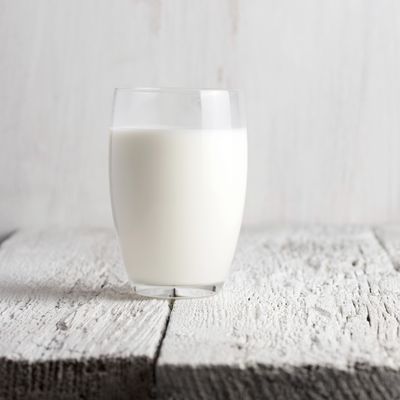
As people raised on two-percent milk or on the downright heavenly whole kind know, skim is little more than water mixed with a splash of milk extract. (If you grew up drinking skim, anything richer might taste gross to you. Sorry for your misfortune.)
But then there are the legions of dieters who reluctantly choke down skim because it saves them 40 calories per cup compared to good, old two-percent. Well, a growing body of research suggests that, despite the caloric difference, low-fat dairy isn’t any better for you.
A recent study in the journal Circulation found that people who ate more full-fat dairy were 46 percent less likely to develop diabetes over the 15-year study period than those who ate less of it. (And this wasn’t based on food journals: The researchers looked for by-products of full-fat dairy in the blood of the study’s 3,300 participants.) Even when researchers controlled for weight gain, eating full-fat dairy was still linked to a lower risk of diabetes.
A separate study published in February looked at dairy consumption in more than 18,000 normal-weight women over 45 and found that, after 11 years, about 8,200 of them became overweight or obese. Women who ate the most full-fat dairy were eight percent less likely to be overweight or obese, while eating low-fat dairy wasn’t associated with less weight gain.
These results seem a little backward since full-fat dairy is higher in calories, but other research has found that when people cut back on fat, they eat more carbs and sugar, which have stronger effects on insulin and on diabetes risk. Plus, fat has this glorious side effect of helping you feel full.
These studies are about dairy products in general, not specifically about milk, but they should come as a relief to people drinking skim in the hopes of losing weight or maintaining it. Still, the findings fly in the face of the latest Dietary Guidelines for Americans which, on one hand, emphasize a focus on whole foods versus specific nutrients and, on the other, include a MyPlate chart that still suggests eating low-fat or fat-free dairy.
A co-author of the Circulation study from Tufts University says the government agencies which put out the Dietary Guidelines need to get their collective head on straight. “I think these findings together with those from other studies do call for a change in the policy of recommending only low-fat dairy products,” Dariush Mozaffarian, Ph.D., told Time. “There is no prospective human evidence that people who eat low-fat dairy do better than people who eat whole-fat dairy.”




